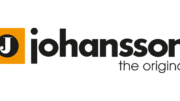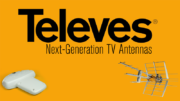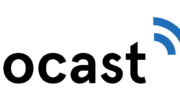Comcast plans to offer pre-paid TV and broadband service later this year. While the move is designed to make the cable TV company’s services more marketable, they still pale in comparison to cutting the cord.
Comcast plans to launch its pre-paid cable TV and Internet services later this year in portions of Illinois and four other states, according to a recent article in DSL Reports. These Xfinity Prepaid Services is supposed to provide users the opportunity to sign up for TV or internet services for a one-time setup fee of $80. This includes equipment and 30 days’ service. Users can renew for seven or 30 days at a time for an additional $15 and $45, respectively.
The move is said to provide options for people who move between vacation homes as well as those who have inconsistent income, according to DSL Reports. Comcast has partnered with Boost Mobile, owned by Sprint, to handle some of the back-end billing and support associate with this option.
How Does It Compare to Cord-Cutting?
Let’s define cord-cutting, first. When we at Solid Signal use the term, we’re talking about using a TV antenna to receive free over-the-air TV programming. (The only true way of cutting the cord.) Now, will Comcast’s latest pay-as-you-go scheme have cord-cutters regretting their decision to exit the cable TV monopoly? Not likely. Despite demographic analyses that suggest cord-cutting is a Millennial trend, people of all ages are deciding to cut the cord for one main reason – to save money.
A new plan to pay for cable TV and Internet services – regardless if it’s lower than Comcast’s current prices – is likely not enough to get most cord-cutters to give up all that free HDTV they’ve come to know and love. Also, cord-cutters who utilize Internet services have likely already secured the lowest possible service plan they can find in their area.
Here’s a look at the pros and cons of Comcast’s proposed prepaid service plan and how it compares to cord-cutting:
-
Con: While Comcast’s one-time setup fee is $80, which is comparable to most indoor and outdoor TV antenna purchase costs. That said, Comcast customers have to have the service installed by a professional while cord-cutters can install and setup antennas themselves.
-
Con: Users of Comcast’s prepaid cable and Internet will be subject to the cable company’s sometimes erratic service and low-quality reception when compared to TV antennas.
-
Con: To continue to get cable and Internet services through Comcast, viewers must pay $15 for seven days or $45 for 30 days of service. Cord-cutters pay nothing for days, weeks, months, and years of free over-the-air local content.
-
Con: Experts believe that Comcast will charge a premium atop its seven- and 30-day service costs. Cord-cutters continue to pay nothing for their TV services.
-
Con: Comcast’s new prepaid services currently available in parts of Illinois and four other states. Cord-cutters can receive free HDTV nearly anywhere in the U.S.
-
Con: Comcast partnered with Boost Mobile to help with back-end billing for its prepaid services. The addition of another company could complicate customer service-related issues, and might mean additional charges for users.
Cord-Cutting Still the Best Option!
Comcast’s latest plan for prepaid services doesn’t stack up against true cord-cutting. (Using a TV antenna to receive free HDTV.) At the end of the day, Comcast is offering a pay-to-play option that provides lower-than-antenna reception quality and sometimes-spotty service for which cable TV companies are known… and for which users still have to pay, even when there’s no service at all.
In other words, the company’s latest prepaid plan is likely going to feature all the things that continue to encourage Americans to cut the cord.





